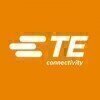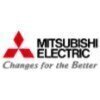Filter interviews by
HOLITECH INDIA Electrical Supervisor Interview Questions and Answers
HOLITECH INDIA Electrical Supervisor Interview Experiences
1 interview found
I applied via Campus Placement and was interviewed in Nov 2021. There were 3 interview rounds.
Interview Questionnaire
2 Questions
- Q1. What your skills
- Q2. How is the management
Interview Preparation Tips
Top trending discussions






Interview questions from similar companies

I appeared for an interview before Jul 2016.
Interview Preparation Tips
Experience: Checked for communication skill
Round: HR Interview
Experience: Discussed about the family background, salary and notice period

Electrical Technician Interview Questions & Answers
Salcomp Manufacturingposted on 17 Sep 2017
I appeared for an interview before Sep 2016.
Interview Questionnaire
7 Questions
- Q1. My subject related questions
- Q2. Technical questions
- Q3. Working of diode
- Ans.
A diode is an electronic component that allows current to flow in one direction and blocks it in the opposite direction.
Diodes are made of semiconductor materials, such as silicon or germanium.
They have two terminals: an anode (positive terminal) and a cathode (negative terminal).
When a diode is forward-biased (positive voltage applied to the anode), it allows current to flow through it.
When a diode is reverse-biased (...
- Q4. Addition of FET.MOSFET TRANSISTOR.
- Ans.
FET (Field Effect Transistor) is a type of transistor that uses an electric field to control the flow of current.
FETs are voltage-controlled devices, meaning they are controlled by the voltage applied to their terminals.
There are two main types of FETs: MOSFET (Metal-Oxide-Semiconductor Field Effect Transistor) and JFET (Junction Field Effect Transistor).
MOSFETs are widely used in various electronic devices, such as co...
- Q5. Sensor.regulater power supply
- Q6. Working of all type moter
- Q7. Etc
Interview Preparation Tips
Experience: My resume is holding

Electrical Technician Interview Questions & Answers
Salcomp Manufacturingposted on 6 Nov 2021
I applied via Recruitment Consultant and was interviewed in May 2021. There was 1 interview round.
Interview Questionnaire
1 Question
- Q1. Easy previous experience
Interview Preparation Tips

Electrical Site Engineer Interview Questions & Answers
Delta Electronicsposted on 4 Aug 2021
Interview Questionnaire
1 Question
- Q1. Related my field

I applied via Walk-in and was interviewed in Dec 2023. There were 3 interview rounds.

(3 Questions)
- Q1. Plc and VFd motor
- Q2. Plc and VFD motor EMS AEMS
- Q3. Convery plc VFD motor EMS AEMS
(3 Questions)
- Q1. Plc and overhead maintenance
- Q2. Hoist and crine EMS and AEMS
- Q3. Electrical maintenance assembly and spot welding

Interview Questionnaire
1 Question
- Q1. What is your previous company ?

(1 Question)
- Q1. Plant specification of LCO2
- Ans.
LCO2 plant specification refers to the detailed requirements and characteristics of a plant that produces liquid carbon dioxide.
LCO2 plants are designed to produce and store liquid carbon dioxide.
The plant typically consists of several key components such as compressors, condensers, and storage tanks.
The specification includes details about the plant's capacity, efficiency, and safety features.
It may also cover aspects...
Interview Preparation Tips

I applied via Walk-in and was interviewed in Feb 2024. There was 1 interview round.
(5 Questions)
- Q1. Pese and newtral weryi important
- Ans.
Pese and neutral wires are crucial for electrical safety and functionality, ensuring proper current flow and preventing hazards.
Pese (or phase) wire carries the current to the load, while neutral wire returns it, completing the circuit.
In a typical household circuit, the phase wire is usually black or red, and the neutral wire is typically white or blue.
Proper connection of these wires prevents electrical shocks and en...
- Q2. Arting weryi important
- Ans.
Arting is crucial for electricians as it ensures safety, efficiency, and compliance with electrical standards.
Safety: Proper arting prevents electrical shocks and fires. For example, grounding systems protect against surges.
Efficiency: Well-designed circuits reduce energy loss. For instance, using the right wire gauge minimizes resistance.
Compliance: Adhering to local codes ensures installations are legal and safe. For...
- Q3. Safly wayar coler red
- Ans.
Safely wiring a red color wire involves understanding its purpose and ensuring proper connections to prevent hazards.
Identify the function of the red wire: typically used for secondary power or as a switch leg.
Ensure the power is turned off before working on any electrical wiring.
Use appropriate connectors and insulation to secure the red wire to prevent short circuits.
Follow local electrical codes and regulations when...
- Q4. Newtral wayar coler block
- Q5. Arting wayar coler gren
- Ans.
The green wire is typically used for grounding in electrical systems, ensuring safety by preventing electrical shocks.
Green wire is used for grounding in electrical installations.
Grounding helps to protect against electrical faults and surges.
In a standard electrical system, the green wire connects to the ground rod.
Example: In a three-prong outlet, the green wire connects to the ground terminal.
Interview Preparation Tips
- MS Office

Electrical Technician Interview Questions & Answers
Salcomp Manufacturingposted on 23 Jan 2022
I applied via Naukri.com and was interviewed in Dec 2021. There were 4 interview rounds.
Interview Questionnaire
1 Question
- Q1. Tell about yourself? Protection in HT panel ? Explain DG exhaust smoke colour details? Draw SLD? E...
- Ans.
I am an experienced Electrical Technician with knowledge in HT panel protection, DG exhaust smoke color details, SLD drawing, and chiller refrigerant cycle.
I have expertise in ensuring the protection of HT panels by implementing appropriate safety measures and devices.
I am familiar with the different colors of DG exhaust smoke and their significance. For example, black smoke indicates incomplete combustion, while white...
Interview Preparation Tips
Tell us how to improve this page.
HOLITECH INDIA Interviews By Designations
- HOLITECH INDIA Quality Engineer Interview Questions
- HOLITECH INDIA Process Quality Control Interview Questions
- HOLITECH INDIA Electrical Maintenance Technician Interview Questions
- HOLITECH INDIA Engineer Interview Questions
- HOLITECH INDIA Product Engineer Interview Questions
- HOLITECH INDIA Senior Engineer Interview Questions
- HOLITECH INDIA Process Engineer Interview Questions
- HOLITECH INDIA Quality Assurance/Quality Control Manager Interview Questions
- Show more
Interview Questions for Popular Designations
- Electrical Engineer Interview Questions
- Supervisor Interview Questions
- Electrician Interview Questions
- Electrical Technician Interview Questions
- Site Supervisor Interview Questions
- Executive Engineer Interview Questions
- Electrical Design Engineer Interview Questions
- Senior Electrical Engineer Interview Questions
- Show more
Interview Questions from Similar Companies
|
Quality Engineer
54
salaries
| ₹2.2 L/yr - ₹4.5 L/yr |
|
Maintenance Engineer
32
salaries
| ₹2 L/yr - ₹4.8 L/yr |
|
Engineer
26
salaries
| ₹2.3 L/yr - ₹4.5 L/yr |
|
Production Engineer
25
salaries
| ₹2.3 L/yr - ₹3.8 L/yr |
|
Process Engineer
22
salaries
| ₹2.4 L/yr - ₹4.2 L/yr |

Flex

Foxconn

TE Connectivity

Wistron
- Home >
- Interviews >
- HOLITECH INDIA Interview Questions












